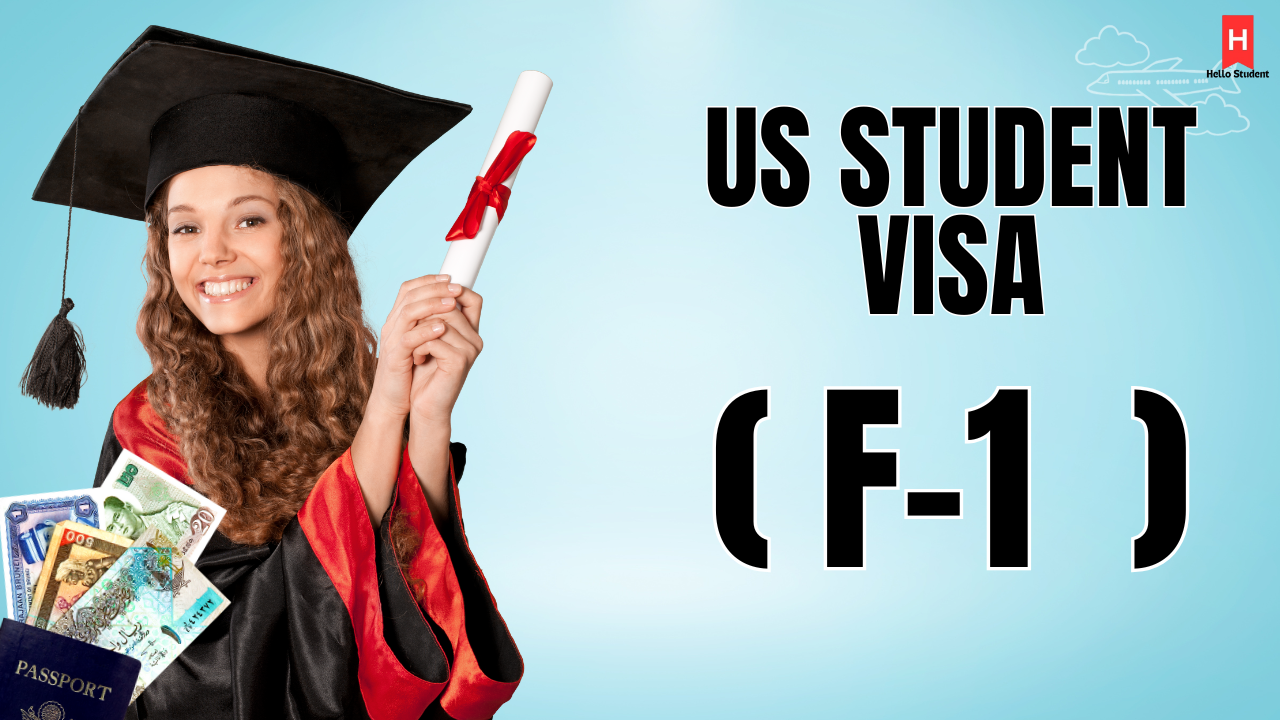Table of Contents
🎓 A Simple & Friendly Guide to the F-1 Student Visa
So, you’re dreaming of studying in the United States? That’s exciting! 🌟 Whether it’s the rich academic experience, the diverse culture, or the chance to explore new opportunities—your first step is getting the F-1 student visa.
This guide breaks down the process in a clear, easy-to-follow way. Whether you’re just starting or preparing for your visa interview, we’ve got you covered.
✈️ What is the F-1 Visa?
The F-1 visa is a special visa for international students who want to study full-time at a school, college, or university in the United States.
It allows you to:
- Live in the U.S. while you study.
- Stay for a short time after graduation.
- Explore work opportunities like internships (OPT/CPT) after your course.
✅ Who Can Apply?
You can apply for an F-1 visa if:
- You’ve been accepted by a U.S. school (and received a document called Form I-20).
- You’ll study full-time.
- You speak English (or are enrolled in a program to learn).
- You can prove you have enough money to pay for your tuition and living expenses.
- You plan to return to your home country after completing your studies.
📝 How to Apply – Step-by-Step
Here’s a clear breakdown of the F-1 visa process:
1. Get Accepted to a School
Apply to a U.S. school. Once accepted, you’ll receive Form I-20, which is required for your visa.
2. Pay the SEVIS Fee
Pay the SEVIS I-901 fee online (currently around $350). Keep the receipt—you’ll need it for your interview.
3. Fill Out the DS-160 Form
Complete the DS-160 visa application form online. After submitting, print the confirmation page with the barcode.
4. Schedule a Visa Interview
Book an appointment at the U.S. Embassy or Consulate in your country.
📁 What to Bring to Your Visa Interview
Be sure to carry these documents:
- A valid passport (at least 6 months beyond your stay)
- Form I-20 from your school
- DS-160 confirmation page
- SEVIS fee receipt
- Interview appointment letter
- A U.S.-style passport photo
- Your school acceptance letter
- Financial proof (bank statements or sponsor letters)
- Your academic records (transcripts, test scores)
🎤 Common Visa Interview Questions (and How to Answer Them)
Here are some questions you might be asked—and how you can answer with confidence:
1. Why do you want to study in the U.S.?
U.S. universities offer great academic programs and real-world learning opportunities.
2. Why did you choose this particular school?
It has a strong program in my field and offers great support to international students.
3. Who is funding your education?
My parents/sponsor will cover the costs. I also received a scholarship.
4. Will you return home after studying?
Yes, I plan to return and contribute to my home country’s growth.
5. What are your career goals?
I want to become a skilled professional and apply my knowledge back home.
✅ Tips for a Successful Interview
- Be honest and confident – speak clearly and from the heart.
- Dress neatly – first impressions matter.
- Keep your answers short and direct – avoid long explanations.
- Don’t submit fake documents – this will lead to rejection.
- Practice ahead of time – but don’t sound robotic.
🚫 Why Some Visas Get Denied
Here are some common reasons:
- Not enough financial proof.
- Vague or weak interview answers.
- Poor academic history.
- Seeming like you want to stay in the U.S. permanently.
Stay prepared, and be clear about your intention to return home after studies.
🎓 After You Get the Visa
Congratulations! Here’s what comes next:
- You can enter the U.S. up to 30 days before your classes begin.
- Make sure to attend school full-time and follow all visa rules.
- After graduating, you may be eligible for OPT (Optional Practical Training), which allows you to work for up to a year (or more if you’re in STEM).
❓ F-1 Visa FAQ
Q1: Can I work while studying in the U.S.?
Yes. You can work on-campus and apply for CPT/OPT for internships or post-graduation work.
Q2: Can my family come with me?
Yes. Your spouse and children can apply for F-2 visas to accompany you.
Q3: How long can I stay in the U.S. on an F-1 visa?
You can stay for the full length of your academic program, plus a 60-day grace period after graduation.
Q4: Do I need to show financial proof?
Yes. You must prove you can afford tuition, living expenses, and health insurance.
Q5: What if my visa is denied?
You can reapply. But first, understand why it was denied and address the issue before your next interview.
🎯 Final Thought
Getting your F-1 visa might seem challenging, but with the right preparation and mindset, you can do it. Be clear about your goals, show that you’re ready to study, and stay true to your story.
Good luck—and welcome to your next big adventure in the U.S.
.
.

